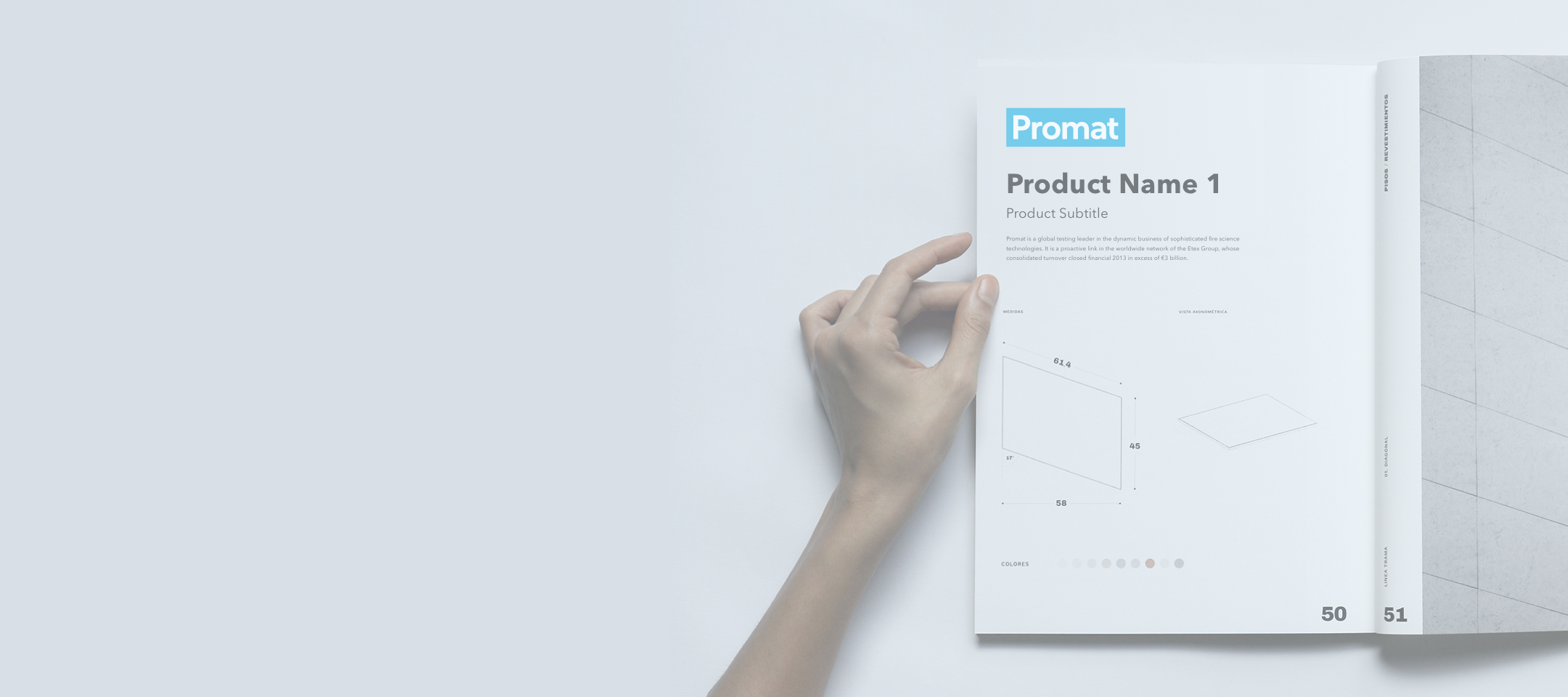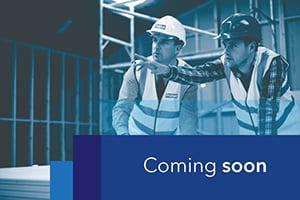
How to protect the load bearing structure
When a fire breaks out, it is crucial that we give the occupants of a building enough time to evacuate to a safe place and aloow the fire fighters to combat the fire. This is why we need to prevent the building to collapse, even partially, during a fire.
If we can aboid the (partial) collapse of the building, we will be able to limit the damage to the building as well as the assets contained in it. In most cases, the content of a building represents special, irreplaceable value. Just think of the objects with historic or emotional value you find in a museum or library. Or the live saving equipment that is used in a hospital. The damage goes far beyond a financial loss.
Promat offers a full range of board, spray and paint products providing flexible solutions to meet a variety of installation and fire protection needs for all common construction materials. All the Promat products and systems have been tested at accredited laboratories around the world to a variety of standards such as the EN 13381 and EN 1365 series, BS 476: Part 21, UL 263 and ASTM E119.

Structural steel protection
When steel heats up during a fire, the structure gradually loses its loadbearing capacity at temperatures between 350oC and 750oC. Depending on the loads and actions on the structure, it would typically fail when the steel reaches temperatures between 500 and 600oC. Therefore, structural steel protection is required to preserve the stability of the building structure in the event of fire. Promat offers a wide range of board, spray and paint products to suit the requirements for any project.
The required thickness of each product depends on:
• The fire resistance requirement (typically 60, 90 or 120 minutes, sometimes even 180 or 240 minutes, in accordance with national legislation and mostly depending on the function and height and the activities inside the building).
• The critical steel temperature (typically 500-600oC and specified in national regulations or by structural engineers). This represents the maximum temperature at which the steel still has sufficient strength left to avoid collapse or large deformations.
• The geometry and the orientation of the steel structure. The thicker the steel elements are, the slower they will heat up. Thinner elements will heat up faster. This is expressed as a “section factor”, which is typically 50-100 m-1 for thick heavy sections and 200-300 m-1 for thin and light sections. The section factor is also influenced by the fire exposure, e.g. on three sides for a beam, on four sides for a column. Testing by independent institutes is always followed by an assessment, which results in tables that provide the required thickness for the given product depending on fire resistance requirement, critical steel temperature, element type, orientation and section factor.

Structural concrete protection
When concrete heats up during fire, at some point in time the steel reinforcement will heat up as well. The heating of the steel reinforcement is delayed by the concrete cover, since the thermal transfer through the concrete is relatively slow. Moreover, at temperatures in a range of roughly 200-800oC the concrete itself loses its loadbearing capacity because of internal micro-cracking and chemical transformation (dehydration) of the cement phase. Typically, design standards simplify this gradual strength loss by assuming a limiting temperature of 500oC for concrete.
For concrete structures in low-humidity environments and exposed to the standard (cellulosic) fire curve, most design codes accept that spalling will not occur. In case of more severe fire curves or exposure to humid environments, spalling of concrete could lead to the loss of cover within a short time, and this could result in an additional more stringent temperature requirement for the concrete surface itself, rather than for the steel reinforcement bar that is placed inside the concrete.
Whenever the concrete cover thickness is insufficient to keep the steel reinforcement temperatures low enough to avoid collapse, or when spalling of concrete could occur or when the concrete itself is deteriorated, fire protection is needed. Promat offers boards, sprays and paints that have been tested and assessed for columns, beams, walls and slabs. In case of a concrete structure that doesn’t spall, the required thickness of the product depends on the amount of lacking concrete cover on the steel reinforcement.
Testing by independent institutes is always followed by an assessment which specifies the performance of the fire protection product in terms of “equivalent thickness” and of adhesion and cohesion of the protective material. The equivalent thickness depends on the fire exposure of the element (single sided such as walls or slabs, or multi sided such as beams or columns) and on the fire resistance requirement.

Fire protection of composite structures
When composite structures, typically consisting of a profiled steel deck with concrete cast on top, are exposed to fire from below, the steel deck will lose strength and potentially detach from the concrete. This will strongly reduce the loadbearing capacity of the composite deck.
In order to avoid such failure, the bottom side of the deck must be fire protected with sufficient thickness for the steel deck to retain its strength and adhesion to the concrete. Typically, a failure temperature of 350oC is used.
Promat offers boards, sprays and paints for the protection of composite slabs. The choice of protection system depends on fire resistance requirement, durability requirements and jobsite conditions.

Structural timber protection
When timber heats up during fire, the material starts to burn at the surface, forming a layer of char. During the fire, the charred depth will gradually increase. The charred material has no strength left and also the pyrolysis zone (between the char and the still unburned wood) has a very limited mechanical resistance. Therefore, the remaining cross-section of the timber element gradually reduces, and at some point, the load can no longer be carried and the element will collapse.
The fire resistance can be improved by applying fire protection. This beneficial effect comes in two ways:
• The fire protection will delay the heating up of the timber, therefore postponing the start of the charring process
• Once the charring starts, the fire protection will slow down the speed of the charring (“charring rate”).
Promat offers board and paint products that have been tested and assessed by independent institutes. The assessment report states the time that the fire protection system delays the start of the charring, as well as the slowed down rate of charring that occurs during more prolonged fire exposure. With these data, the engineer can calculate the effectively remaining cross section of the timber element after a certain fire exposure and check that it is still able to carry the loads.



